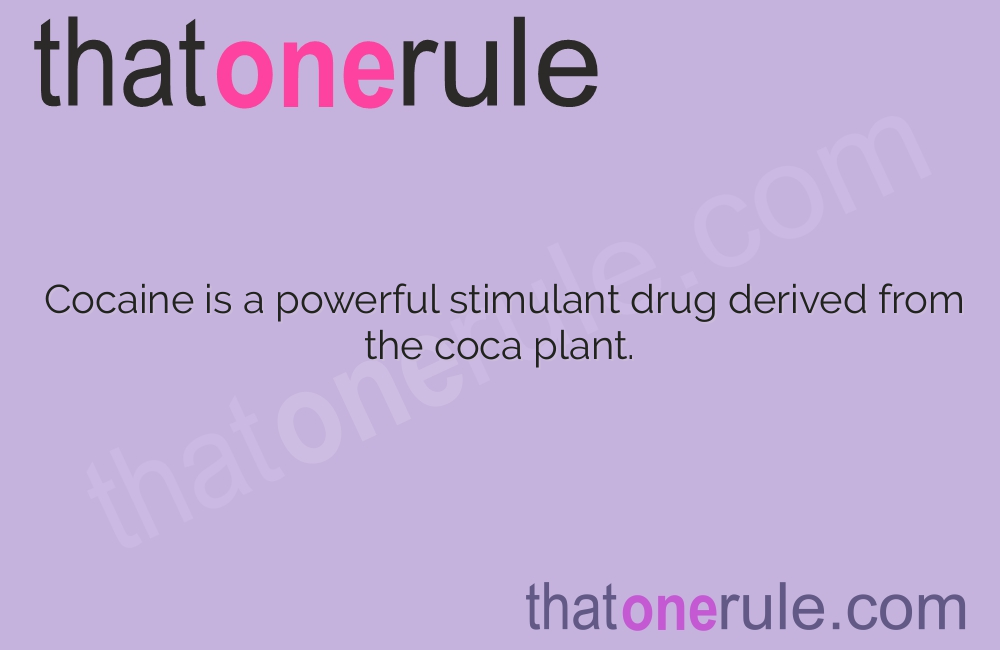Should Book Titles be Italicized or in Quotes?
Book titles should be italicized to distinguish them from the rest of the text.
Using italics for book titles adds a stylish touch to your writing.
Quotation marks for book titles are outdated and less visually appealing.
Italicizing book titles helps to highlight their importance within the text.
Using quotes for book titles can make a sentence look cluttered.
Italics make it easier for readers to identify and remember book titles.
Quotation marks for book titles can be confusing when used in dialogue.
Book titles deserve the emphasis that italics provide.
Using italics for book titles follows the standard style guide rules.
Italics give book titles a professional and polished appearance.
Quotation marks should be reserved for direct speech, not book titles.
Italicizing book titles adds a layer of sophistication to your writing.
Consistently italicizing book titles in your writing shows attention to detail.
Quotation marks for book titles can interrupt the flow of a sentence.
Italics for book titles create a sense of distinction within the text.
Using quotes for book titles can make them less noticeable and impactful.
Book titles should stand out, and italics help achieve that.
Italicizing book titles helps readers quickly identify them as important references.
Quotation marks for book titles can create confusion when used with other types of quotes.
Italicized book titles make it easier for readers to locate and reference specific works.
Using quotes for book titles can make them blend in with the rest of the text.
Italics bring attention to book titles without overwhelming the reader.
Quotation marks for book titles can be distracting and unnecessary.
Italicizing book titles adds visual interest to your writing.
Consistency in italicizing book titles is aesthetically pleasing.
Using quotes for book titles can make them appear less significant.
Italics for book titles provide clarity and precision in writing.
Quotation marks for book titles can create ambiguity in sentence structure.
Italicizing book titles creates a clear distinction between them and other types of references.
Using quotes for book titles can make them seem like secondary elements in the text.
Book titles deserve to be visually emphasized, and italics accomplish that.
Quotation marks for book titles can be confusing when used with other forms of punctuation.
Italics for book titles enhance the overall readability of your writing.
Using quotes for book titles can make them appear less professional.
Italicizing book titles adds a touch of elegance to your writing.
Quotation marks for book titles can interfere with the visual flow of the text.
Book titles stand out more effectively when they are italicized.
Italics for book titles give the reader a visual cue of their importance.
Using quotes for book titles can make them seem like mere phrases rather than significant works.
Italicizing book titles can help to clarify the intended emphasis within a sentence.
Quotation marks for book titles can create unnecessary punctuation clutter.
Book titles should be distinguished with italics to avoid confusion with regular text.
Italics make it easier to locate and reference specific book titles.
Using quotes for book titles can give them a less prominent presence in the text.
Italicizing book titles is a standard practice that ensures clarity and consistency.
Punctuation Rules for Quotation Marks
Punctuation after quotes is a topic that often confuses students and writers alike.
The correct placement of punctuation after quotes can drastically change the meaning of a sentence.
Quotation marks serve as a visual cue to the reader that someone is speaking or that the words are borrowed from another source.
Using the proper punctuation after quotes shows respect for the rules of grammar.
Did you know that in British English, the punctuation always goes outside the quotation marks?
It’s crucial to pay attention to the placement of punctuation after quotes to avoid misunderstandings.
Punctuation after quotes is like the cherry on top of a well-written sentence.
The rules of punctuation after quotes are there to bring clarity to your writing.
Learning the proper punctuation after quotes can make your writing appear more professional.
Incorrect placement of punctuation after quotes is a common mistake that can be easily avoided.
Remember, punctuation after quotes should follow the style guide you are using.
Knowing the rules of punctuation after quotes gives you more control over your writing.
There is no one-size-fits-all approach to punctuation after quotes, as it may vary depending on the language or region.
Punctuation after quotes is a subtle yet essential aspect of effective communication.
Improper punctuation after quotes can lead to confusion and misinterpretation.
The way you punctuate after quotes can affect the flow and rhythm of your writing.
Take the time to master the rules of punctuation after quotes to enhance your writing skills.
Punctuation after quotes is like a puzzle that needs to be solved.
Knowing when to use a comma, period, or question mark after quotes can be tricky.
Using the right punctuation after quotes can lend credibility to your writing.
Punctuation after quotes adds an extra layer of precision to your words.
The correct placement of punctuation after quotes demonstrates your attention to detail.
Punctuation after quotes is like the frame that holds the words together.
Paying attention to punctuation after quotes showcases your commitment to writing well.
The rules for punctuation after quotes may seem arbitrary, but they serve a purpose.
Incorrect punctuation after quotes can alter the meaning of a sentence, sometimes dramatically.
Punctuation after quotes is not only about grammar; it’s about clarity and effective communication.
Think of punctuation after quotes as the finishing touch on your sentence.
Using the wrong punctuation after quotes can result in a sentence that lacks coherence.
Proper placement of punctuation after quotes is an essential skill for any writer or editor.
Punctuation after quotes is like the conductor guiding the reader through your writing.
The rules for punctuation after quotes may seem complex, but they can be mastered with practice.
Without proper punctuation after quotes, a sentence can feel incomplete or disjointed.
Punctuation after quotes is a fundamental aspect of written language that should not be overlooked.
Understanding the nuances of punctuation after quotes can elevate the quality of your writing.
Using the appropriate punctuation after quotes shows that you respect the integrity of the original text.
Paying attention to punctuation after quotes demonstrates your professionalism as a writer.
Punctuation after quotes may be a small detail, but it can make a big difference in how your writing is perceived.
The rules for punctuation after quotes are designed to promote clarity and consistency in written language.
Punctuation after quotes is like the punctuation mark that signals the end of a musical note.
Precision in punctuation after quotes is crucial for conveying the intended meaning of a sentence.
Remember that the placement of punctuation after quotes may vary depending on the situation or style guide.
Punctuation after quotes is a way to honor the source of the borrowed words or the speaker’s voice.
Mastering the rules of punctuation after quotes can improve the overall readability of your writing.
Don’t underestimate the importance of mastering punctuation after quotes; it can elevate your writing from good to great.
Should You Use Italics or Quotes for Movie Titles?
Resurgence: A Tale of Redemption
Silver Lining: Embracing Change
The Reflection: A Mirror of Truth
Whispers in the Dark: An Unlikely Love Story
Lost and Found: A Journey of Self-Discovery
Shattered Dreams: Piecing Life Together
Echoes of the Past: Unraveling Family Secrets
Serenity: Finding Peace in Chaos
The Art of Letting Go: A Story of Healing
Between the Lines: The Power of Words
Voices in the Wind: Chasing Dreams
Fading Colors: Embracing Impermanence
The Edge of Time: A Leap into the Unknown
Silent Whispers: Uncovering Hidden Truths
The Phoenix Effect: Rising from the Ashes
Infinite Possibilities: Exploring the Unknown
Captive Hearts: Love that Transcends Boundaries
Hidden Gems: Discovering True Beauty
Lost in Translation: A Journey of Connection
The Language of Silence: Unspoken Stories
Chasing Shadows: A Thrilling Pursuit
Whirlwind of Emotions: Dancing through Life
The Enigma: Unlocking the Mystery
The Wild Unknown: Exploring Uncharted Territory
Parallel Worlds: A Glimpse into Other Realities
Sailing through Storms: Navigating Life’s Challenges
Echoes of Destiny: Embracing Fate
Wandering Souls: Seeking Redemption
The Power Within: Unleashing Hidden Strength
Melodies in Motion: A Symphony of Life
Through the Looking Glass: A Journey of Perception
Whispers of Wisdom: Finding Guidance in Unexpected Places
Threads of Time: Weaving the Story of Eternity
Divided Loyalties: A Battle for the Soul
Behind Closed Doors: Unmasking the Truth
Fading Footsteps: A Legacy Remembered
The Sound of Silence: Embracing Solitude
Serenade of the Stars: Dreams that Span the Universe
Invisible Boundaries: Breaking Barriers
Suspended Animation: The Essence of Timelessness
The Ripple Effect: Changing Lives, One Moment at a Time
Notes from the Underground: Dissonance in Society
The Glass Ceiling: Shattering Limitations
Life’s Director’s Cut: A Story Worth Telling
Revealing Reflections: Unveiling the True Self
Nutritional Facts of Nuts per 100g
Nuts are packed with protein and healthy fats.
Enjoying a handful of nuts each day can improve your heart health.
Nuts are a natural source of antioxidants, which help fight off harmful free radicals.
Eating nuts can provide a great energy boost and keep you feeling full for longer.
Nuts are a wonderful addition to a balanced diet due to their high nutrient content.
Incorporating a variety of nuts into your diet can provide a wide range of essential vitamins and minerals.
Research shows that regularly consuming nuts can lower the risk of developing chronic diseases such as diabetes.
Nuts are an excellent source of dietary fiber, promoting a healthy digestive system.
The healthy fats in nuts can actually help you lose weight by curbing cravings and promoting satiety.
Nuts contain phytosterols, which can help lower cholesterol levels.
Snacking on nuts can support brain health and improve cognitive function.
Nuts are a versatile ingredient in cooking and baking, adding texture and flavor to dishes.
Including nuts in your diet can boost your immune system and promote overall wellness.
Nuts are naturally gluten-free, making them a great option for those with dietary restrictions.
Nuts provide a convenient and portable snack option for busy individuals on the go.
Nuts can be enjoyed as a post-workout snack to aid in muscle repair and recovery.
Substituting unhealthy snacks with nuts can help you maintain a healthy weight.
Nuts are known to have anti-inflammatory properties, benefiting those with inflammatory conditions.
Nuts are low in carbohydrates and can be included in a ketogenic or low-carb diet.
Nuts are a great addition to vegetarian and vegan diets, as they are an excellent plant-based protein source.
Nuts are naturally cholesterol-free and are a heart-healthy alternative to other snack options.
Nuts are a satisfying and fulfilling snack that can help prevent overeating.
A handful of nuts each day can contribute to stronger bones and teeth due to their calcium content.
Nuts are rich in magnesium, which plays a crucial role in regulating blood pressure.
Nuts are a great source of iron, making them an important food for those at risk of anemia.
Including nuts in your diet can improve skin health and promote a youthful appearance.
Nuts are a delicious and nutritious addition to salads, adding crunch and flavor.
Nuts are a fantastic source of omega-3 fatty acids, which are essential for optimal brain function.
Snacking on nuts can help stabilize blood sugar levels, making them a smart choice for diabetics.
Nuts are a nutrient-dense food that can be enjoyed by individuals of all ages.
Nuts are a natural mood booster, thanks to their high content of healthy fats and essential nutrients.
Eating a handful of nuts before bed can promote a restful night’s sleep due to their tryptophan content.
Nuts can provide relief from constipation and promote a healthy digestive system.
Nuts are a great source of plant-based protein for those following a vegetarian or vegan lifestyle.
Adding nuts to your meals can enhance the nutritional value and make them more satisfying.
Nuts make for a great on-the-go snack that is easy to pack and store.
Nuts are a healthy and crunchy alternative to unhealthy processed snacks.
Nuts can be enjoyed in various forms, including raw, roasted, or in nut butters.
Nuts are a guilt-free snack that can be enjoyed in moderation as part of a balanced diet.
Including a variety of nuts in your diet can help combat nutrient deficiencies.
Nuts are a food that can be enjoyed by people with various dietary restrictions or intolerances.
Nuts are an excellent source of vitamin E, which is essential for healthy skin and hair.
Snacking on nuts can help improve memory and cognitive function, especially in older adults.
Nuts are a great source of monounsaturated fats, which can help reduce bad cholesterol levels.
Adding nuts to your favorite desserts can make them healthier, without compromising on taste.
Discover the Nutrition Facts of Cheddar Cheese
Cheddar cheese is a delicious and nutrient-rich food option.
The nutrition facts of cheddar cheese emphasize its high protein content.
Cheddar cheese is a great source of calcium, essential for strong bones and teeth.
Indulging in cheddar cheese can provide a good dose of vitamin K2, promoting heart health.
The creamy texture of cheddar cheese is the result of its high fat content.
Cheddar cheese, when consumed in moderation, can be a part of a balanced diet.
Cheddar cheese pairs beautifully with fruits, adding both flavor and nutritional value to your snack.
The tangy flavor of aged cheddar cheese is intensified by its complex nutritional profile.
Sprinkle some shredded cheddar cheese on your salad for a delicious and nutritious boost.
Cheddar cheese contains important minerals like phosphorus, which plays a role in energy production.
Cheddar cheese is a versatile ingredient that can be used in various dishes from mac and cheese to sandwiches.
The smooth meltability of cheddar cheese is due to its unique nutritional composition.
Cheddar cheese nutrition facts highlight its low carbohydrate content, making it suitable for low-carb diets.
Enjoy a slice of cheddar cheese with whole-grain crackers for a satisfying and well-rounded snack.
The vibrant orange color of some cheddar cheese varieties is a result of the natural coloring agent, annatto.
Cheddar cheese nutrition facts remind us of its place in history as one of the oldest cheese varieties.
The calcium content in cheddar cheese promotes optimal nerve and muscle functioning.
Cheddar cheese is a great source of phosphorus, which is essential for strong and healthy bones.
Savor the sharp and tangy flavor of cheddar cheese, knowing it also provides essential nutrients.
Cheddar cheese is a wholesome food option for those following a ketogenic diet.
The nutrition facts of cheddar cheese emphasize its high vitamin B12 content, crucial for nerve health.
Cheddar cheese can add a burst of flavor to your omelet or scrambled eggs.
Cheddar cheese is a convenient and nutritious snack option for those on the go.
Bite into a grilled cheese sandwich, relishing the delicious taste and the nutritional benefits of cheddar cheese.
Cheddar cheese offers a good balance of essential amino acids, necessary for growth and repair.
The creamy and slightly salty taste of cheddar cheese is a result of its nutritional composition.
Sprinkle some grated cheddar cheese on your pasta for a simple yet satisfying meal.
The texture of cheddar cheese varies from smooth and creamy to crumbly and sharp, providing options for different tastes.
Cheddar cheese provides a substantial amount of vitamin A, which is essential for good vision.
The rich and robust flavor of aged cheddar cheese is a testament to its high-quality nutrition.
Cheddar cheese can be enjoyed on its own or paired with other ingredients, adding both taste and nutrition to your meals.
Cheddar cheese is a natural source of conjugated linoleic acid (CLA), which may have health benefits.
The nutritional benefits of cheddar cheese make it a popular choice among athletes and fitness enthusiasts.
Satisfy your cravings with a cheese platter that includes a variety of cheddar cheese options, each offering unique nutrition.
Cheddar cheese is a good source of high-quality protein, necessary for tissue repair and growth.
The flavor and texture of cheddar cheese enhance the enjoyment of indulgent dishes like cheeseburgers and nachos.
Cheddar cheese nutrition facts underscore its role as a nutrient-dense dairy product.
Cheddar cheese can be grated and used as a topping for soup or chili, adding both flavor and nutrition.
The calcium content in cheddar cheese contributes to optimal blood clotting and wound healing.
Cheddar cheese pairs well with wine, creating a combination of flavors that is both indulgent and nutritious.
The nutritional benefits of cheddar cheese extend beyond its taste, making it a wholesome addition to your diet.
Cheddar cheese is a valuable source of omega-3 fatty acids, which have been linked to numerous health benefits.
Swap your usual processed cheese for flavorful cheddar cheese, elevating the nutritional value of your meal.
Cheddar cheese can be enjoyed by people of all ages, providing essential nutrients at every stage of life.
The next time you enjoy a cheese board, remember the rich and robust flavors of cheddar cheese and its impressive nutritional profile.
Shilajit – An Insight into Its Nutritional Facts
Shilajit is a natural substance with numerous nutritional benefits.
A small amount of shilajit contains a powerful blend of vitamins and minerals.
Shilajit is rich in fulvic acid, which supports nutrient absorption in the body.
Shilajit provides a natural energy boost, perfect for a busy lifestyle.
The antioxidants in shilajit help to fight against harmful free radicals in the body.
Shilajit supports healthy brain function and cognitive abilities.
Shilajit is known to enhance athletic performance and improve recovery time.
The iron content in shilajit helps to prevent anemia and support healthy blood flow.
Shilajit contains trace minerals that support bone strength and density.
Regular consumption of shilajit can improve skin health and promote a youthful appearance.
Shilajit is a natural detoxifier that helps to eliminate toxins from the body.
Shilajit has been used for centuries as a natural remedy for various ailments.
Shilajit supports a healthy immune system, helping to fight off infections and diseases.
The nutrients in shilajit promote healthy digestion and improve gut health.
Shilajit is an excellent source of natural antioxidants, supporting overall health and wellbeing.
Shilajit can help to balance hormones and improve reproductive health.
Regular consumption of shilajit can improve mood and reduce symptoms of depression and anxiety.
Shilajit supports liver health and aids in detoxification processes.
Shilajit is a natural anti-inflammatory, helping to reduce pain and inflammation in the body.
Shilajit contains amino acids that support muscle recovery and growth.
Shilajit improves nutrient absorption, ensuring that the body receives maximum benefits from food.
The minerals in shilajit promote healthy hair growth and prevent hair loss.
Shilajit supports cardiovascular health and helps to lower blood pressure.
Shilajit boosts collagen production, leading to improved skin elasticity and reduced wrinkles.
Regular consumption of shilajit can improve memory and cognitive function.
Shilajit helps to regulate blood sugar levels, making it beneficial for those with diabetes.
The nutrients in shilajit improve liver function and aid in the removal of toxins from the body.
Shilajit can help to alleviate symptoms of chronic fatigue and increase overall energy levels.
Shilajit supports kidney function and helps to prevent kidney stones.
Regular consumption of shilajit improves sleep quality and promotes better rest.
Shilajit supports a healthy respiratory system and aids in the treatment of respiratory conditions.
Shilajit helps to reduce inflammation in the joints, making it beneficial for those with arthritis.
The antioxidants in shilajit protect against cellular damage and premature aging.
Shilajit supports a healthy metabolism, aiding in weight management.
Shilajit improves nutrient absorption, ensuring that the body receives all essential vitamins and minerals.
Regular consumption of shilajit can improve liver function and aid in the removal of toxins from the body.
Shilajit helps to balance hormones, leading to improved mood and reproductive health.
The minerals in shilajit promote bone strength and prevent the risk of osteoporosis.
Shilajit supports healthy skin by improving collagen production and reducing wrinkles.
Shilajit aids in the digestion process and improves gut health.
Regular consumption of shilajit can boost the immune system and help fight off infections.
Shilajit helps to reduce inflammation in the body and alleviate pain.
Shilajit improves cognitive function and memory retention.
The nutrients in shilajit support cardiovascular health and help lower blood pressure.
Shilajit provides a natural energy boost without the crash associated with caffeine or sugar.
Understanding the Concept of Scare Quotes
Scare quotes add an air of skepticism to a statement.
The use of scare quotes allows for a nuanced understanding of a phrase.
Scare quotes can be a subtle way of expressing disagreement.
Sometimes scare quotes can make a statement sound sarcastic.
Scare quotes can be seen as a form of linguistic irony.
Using scare quotes can elicit a range of emotional responses.
Scare quotes can challenge the assumed meaning of a word or phrase.
Scare quotes can serve as a linguistic tool for precision.
Scare quotes offer a way to distance oneself from a particular concept.
Scare quotes can provoke thought and critical analysis.
Scare quotes can make a statement appear dubious.
Scare quotes can be used strategically to undermine an argument.
The intent behind scare quotes is often open to interpretation.
Scare quotes can create a sense of irony or disbelief.
Scare quotes can signal a departure from conventional meanings.
Using scare quotes can demonstrate a certain level of skepticism.
Scare quotes can be used to emphasize the differences between intended and surface meanings.
Scare quotes can be jarring, but they serve a purpose.
Scare quotes invite the reader to question the underlying assumptions.
Scare quotes can convey a layer of complexity to a statement.
Using scare quotes allows for a deeper exploration of language and meaning.
Scare quotes can be seen as a form of literary device.
Scare quotes challenge the notion of fixed definitions.
Scare quotes can highlight language’s inherent subjectivity.
Scare quotes can make the reader pause and reflect on the statement.
Scare quotes can be used to cast doubt on a commonly accepted belief.
Using scare quotes can be an effective rhetorical strategy.
Scare quotes can blur the line between fact and interpretation.
Scare quotes serve as a reminder that language is fluid and evolving.
Scare quotes allow for multiple meanings to coexist within a statement.
Scare quotes can be used to express humor or irony.
Using scare quotes can illuminate the power dynamics embedded in language.
Scare quotes can be a subversive tool in challenging established discourse.
Using scare quotes helps to navigate the complexities of meaning.
Scare quotes can be a form of linguistic rebellion.
Scare quotes force the reader to actively engage with the statement.
Scare quotes can be used to dismantle oversimplified narratives.
Using scare quotes can highlight the limitations of language.
Scare quotes can make a statement appear more thought-provoking.
Scare quotes add a layer of ambiguity to a statement.
Using scare quotes can convey a sense of skepticism towards authority.
Scare quotes help to disrupt the status quo of language.
Scare quotes can be a form of intellectual resistance.
Using scare quotes can challenge societal norms and biases.
Scare quotes inspire critical thinking and questioning of assumptions.
Urine Drug Test Facts – Everything You Need to Know
Urine drug tests are commonly used to detect the presence of illicit substances in a person’s system.
These tests can provide important information about a person’s drug use habits and help identify potential substance abuse issues.
Urine drug tests are non-invasive and can be easily administered in a variety of settings, such as workplaces or rehabilitation centers.
The accuracy of urine drug tests can vary depending on the specific substances being tested for and the timing of the test.
False-positive and false-negative results are possible with urine drug tests, so confirmatory testing is often necessary.
Many different drugs can be detected through urine tests, including marijuana, cocaine, opioids, amphetamines, and benzodiazepines.
The detection window for each drug can vary, with some substances being detectable for only a few days and others for several weeks.
Factors such as metabolism, hydration levels, and dosage can influence the length of time drugs are detectable in urine.
Synthetic urine products are available on the market, which can be used to try and cheat urine drug tests.
Adulteration of urine samples, such as adding substances to mask drug use, is a common issue with drug testing.
Proper chain of custody procedures must be followed to ensure the integrity of urine samples during drug testing.
Some medications and legal substances can also result in positive urine drug test results, so it’s important to disclose any relevant information prior to testing.
Urine drug tests are widely used by employers to ensure a safe and drug-free work environment.
The use of urine drug tests in the criminal justice system helps with monitoring probation or parole compliance.
Urine drug tests play a crucial role in addiction treatment programs, as they provide evidence of sustained sobriety.
Urine drug tests are not foolproof and can be susceptible to human error, sample tampering, or testing equipment malfunction.
Positive urine drug test results should be followed up with further assessment and interventions to address substance abuse issues.
Urine drug tests can be a deterrent for potential drug use, as individuals may fear the consequences of a positive result.
Some drug testing panels can detect multiple drugs simultaneously, allowing for a comprehensive assessment of substance use.
Drug testing policies and procedures should be regularly reviewed to ensure they align with current best practices and legal requirements.
The accuracy of urine drug tests can be influenced by the pH and temperature of the urine sample.
In some cases, individuals may be required to undergo observed urine drug tests to prevent sample tampering.
The development of new drug testing technologies continues to improve the accuracy and efficiency of urine drug tests.
Quick and accurate urine drug test results can help facilitate timely interventions and treatment for individuals struggling with substance abuse.
Federal regulations dictate specific requirements for workplace drug testing, including the use of certified laboratories and proper documentation.
Variations in drug metabolism among individuals can lead to different detection times for the same substance in urine.
Routine drug testing can be an effective way to deter drug use and maintain a substance-free environment.
Urine drug tests can provide valuable information to clinicians for making informed treatment decisions.
Some industries, such as transportation or healthcare, have strict urine drug testing regulations to ensure public safety.
Urine drug tests are one of the most common methods used for drug testing due to their relative simplicity and cost-effectiveness.
Certain factors, such as age, gender, and overall health, can influence how long drugs stay in urine and can be detected.
Non-invasive nature of urine drug tests makes them less invasive than other methods, such as blood or hair follicle tests.
For accurate results, urine drug tests should be performed by trained professionals following proper protocols.
The detection of specific drug metabolites in urine can provide information about the timing and frequency of drug use.
Urine drug tests can be an essential tool for monitoring individuals in substance abuse treatment programs to ensure compliance.
The use of cutoff levels helps determine the concentration of drugs necessary for a positive urine drug test result.
Urine drug tests are often used in forensic toxicology to determine drug use in criminal investigations.
Confirmatory testing methods, such as gas chromatography-mass spectrometry (GC-MS), are used to validate positive urine drug test results.
Drug testing technology continues to evolve, with the development of new methods for detecting previously undetectable substances.
Some individuals resort to various strategies to try and beat urine drug tests, such as dilution or substitution.
The accuracy of urine drug tests can be affected by certain medical conditions or medications, leading to potential false results.
Different industries and organizations have varying guidelines and requirements when it comes to urine drug testing.
Some states have implemented laws and regulations regarding employer drug testing practices to ensure fairness and privacy protection.
Drug testing in schools can help identify students at risk for substance abuse and provide appropriate interventions.
The use of urine drug tests has contributed to the overall understanding of substance abuse trends and patterns in different populations.
Key Facts about the Keystone Pipeline
The Keystone pipeline is a vital energy infrastructure project.
The Keystone pipeline is designed to transport oil from Canada to the United States.
The Keystone pipeline has faced numerous controversies and debates.
The construction of the Keystone pipeline provides employment opportunities.
The Keystone pipeline aims to reduce American dependence on foreign oil.
The Keystone pipeline has faced environmental concerns due to potential oil spills.
The Keystone pipeline has the potential to boost North American energy security.
The economic benefits of the Keystone pipeline include increased investment and revenue.
The Keystone pipeline has the capacity to transport over 800,000 barrels of oil per day.
The Keystone pipeline has faced legal battles and regulatory hurdles.
The Keystone pipeline is expected to contribute to the growth of North American oil production.
The Keystone pipeline has faced opposition from indigenous communities.
The construction of the Keystone pipeline creates job opportunities for local communities.
The Keystone pipeline’s route passes through sensitive ecological areas.
The Keystone pipeline is part of a larger effort to improve energy infrastructure in North America.
The Keystone pipeline has the potential to reduce transportation costs for oil producers.
The construction of the Keystone pipeline is a complex engineering project.
The Keystone pipeline has faced delays in its construction and operation.
The Keystone pipeline has the ability to diversify North American oil supply sources.
The Keystone pipeline will contribute to the economic growth of both Canada and the United States.
The Keystone pipeline has raised concerns about oil extraction methods in Canada.
The Keystone pipeline is seen as a safer alternative to transporting oil by rail or truck.
The Keystone pipeline brings both economic and environmental considerations to the forefront.
The Keystone pipeline has been a key point of contention in the political landscape.
The construction of the Keystone pipeline requires extensive environmental impact assessments.
The Keystone pipeline has the potential to reduce carbon emissions by replacing less efficient transport methods.
The Keystone pipeline has faced opposition from environmental groups due to climate change concerns.
The Keystone pipeline construction has contributed to technological advancements in pipeline engineering.
The Keystone pipeline project supports the North American energy integration.
The Keystone pipeline has faced protests and demonstrations.
The Keystone pipeline has been viewed as a symbol of the struggle between fossil fuels and renewable energy.
The Keystone pipeline has faced legal challenges related to land rights and indigenous rights.
The Keystone pipeline project has faced criticism for its potential impact on water sources.
The Keystone pipeline has the potential to strengthen Canada-US relations.
The Keystone pipeline has been a topic of discussion in international energy forums.
The Keystone pipeline has the capacity to transport oil from the Alberta oil sands.
The Keystone pipeline project has undergone significant revisions to address environmental concerns.
The Keystone pipeline has sparked debates on energy sustainability and climate change.
The Keystone pipeline is supported by some as a means to reduce reliance on Middle Eastern oil.
The Keystone pipeline has the potential to create new markets for Canadian oil producers.
The Keystone pipeline has faced opposition based on concerns of potential leaks and spills.
The Keystone pipeline project has encountered regulatory challenges at both the state and federal levels.
The Keystone pipeline has led to discussions on the future of fossil fuels in the energy landscape.
The Keystone pipeline has faced criticism for its potential impact on wildlife habitats.
The Keystone pipeline has the potential to contribute to energy independence and security.
Facts about steroids
Steroids are a class of organic compounds with a unique molecular structure.
Anabolic steroids are synthetic substances that mimic the effects of testosterone.
Steroids have both medical and non-medical uses.
Steroids can be used to treat hormonal disorders and certain types of cancers.
Misuse of steroids can lead to numerous adverse health effects.
Steroids are commonly abused by athletes and bodybuilders to enhance performance and muscle growth.
Long-term use of steroids can result in liver damage and cardiovascular problems.
Steroids can increase the risk of psychiatric disorders, such as aggression and depression.
Some steroids have legitimate medical uses, such as reducing inflammation and treating asthma.
Steroids can alter the hormonal balance in the body, leading to reproductive and sexual problems.
The use of steroids without a prescription is illegal in many countries.
Steroids can be addictive, leading to withdrawal symptoms when discontinued.
Steroids can cause skin problems, such as acne and oily skin.
Steroids can affect bone growth and development in adolescents.
Certain types of steroids can improve the body’s ability to retain nitrogen, promoting muscle growth.
Steroids can suppress the immune system, making users more susceptible to infections and diseases.
Prolonged steroid use can cause hormonal imbalances and disruption of the endocrine system.
Steroids can increase the risk of tendon and ligament injuries due to the rapid muscle growth they promote.
Steroids can cause high blood pressure and increase the risk of heart attacks and strokes.
Steroids can lead to stunted growth in children and adolescents.
The abuse of steroids can result in liver tumors and cancer.
Steroids can cause masculinizing effects in women, such as facial hair growth and deepening of the voice.
Steroids can cause irregular menstrual cycles and infertility in women.
The use of steroids during pregnancy can harm the fetus and increase the risk of birth defects.
Steroids can impair cognitive function and lead to mood swings and emotional instability.
Steroids can reduce the body’s natural production of testosterone, leading to dependency on external sources.
Steroids can cause fluid retention and weight gain.
Steroids can increase the risk of tendon ruptures and muscle strains due to the imbalance they create between muscle strength and tendon integrity.
Steroids can interfere with sleep patterns and cause insomnia.
Steroids can have detrimental effects on cholesterol levels, increasing the risk of cardiovascular disease.
The use of veterinary steroids in livestock can lead to the consumption of potentially harmful residues by humans.
Steroids can suppress appetite, leading to weight loss and malnutrition.
Steroids can cause liver damage and jaundice.
The unregulated use of steroids in the cosmetic industry can lead to unsafe products and potential health risks.
Steroids can lead to addiction and the need for higher doses to achieve the same effects.
Steroids can alter the balance of electrolytes in the body, leading to imbalances and potential complications.
Steroids can increase the risk of tendonitis and other overuse injuries.
Steroids can impair the body’s natural healing process, leading to delayed recovery from injuries.
The use of steroids in sports is considered cheating and is banned by most professional organizations.
Steroids can cause a condition known as roid rage, characterized by sudden bursts of aggression and anger.
Steroids can cause hair loss and baldness in both men and women.
Steroids can lead to liver failure and the need for organ transplantation.
Long-term steroid use can weaken the immune system, making users more susceptible to infections and illnesses.
Steroids can increase the risk of tendon tears and ruptures during physical activities.
Steroids can have long-lasting effects on brain function and cognition, including memory and concentration problems.
Fascinating Facts About Mitosis
Mitosis is a process of cell division that ensures the growth and development of living organisms.
Mitosis is a fundamental process for the propagation of genetic information.
Mitosis is the key mechanism behind tissue regeneration in multicellular organisms.
Mitosis allows for the creation of identical cells, ensuring genetic stability.
During mitosis, a single cell divides into two identical daughter cells.
Mitosis is a highly regulated process that involves several stages.
The stages of mitosis include prophase, metaphase, anaphase, and telophase.
Each stage of mitosis has specific characteristics and functions.
DNA replication occurs before mitosis to ensure that each daughter cell has a complete set of genetic information.
Mitosis is crucial for the repair of damaged tissues.
Mitosis allows organisms to grow and develop by increasing their cell number.
Mitosis occurs in all eukaryotic organisms.
Mitosis is a continuous process, with cells constantly undergoing division.
Mitosis helps in maintaining a constant cell population in tissues.
Mitosis plays a significant role in the formation of gametes during sexual reproduction.
Mitosis ensures that each daughter cell receives an equal share of genetic material.
Errors in mitosis can lead to genetic disorders and diseases.
Mitosis is a highly coordinated process that requires precise cell signaling and regulation.
The duration of mitosis varies depending on the organism and cell type.
Mitosis is essential for the growth and development of embryos.
Mitosis is affected by various environmental factors, such as temperature and nutrient availability.
Mitosis allows for the repair and regeneration of damaged organs and tissues.
Mitosis helps in maintaining the integrity and stability of the genome.
Mitosis is essential for the production of new cells in the human body.
Mitosis is a complex process that involves the formation and breakdown of the nuclear envelope.
The centrosome plays a crucial role in organizing the mitotic spindle during cell division.
Mitosis occurs through the controlled division of the nuclear material and cytoplasm.
Mitosis is regulated by a series of checkpoints to ensure the accuracy of the division process.
Mitosis is necessary for the production of blood cells in the bone marrow.
Mitosis is a dynamic process that involves the movement and redistribution of cellular components.
Mitosis is sensitive to changes in cellular energy levels.
Mitosis is necessary for the maintenance of homeostasis in multicellular organisms.
Mitosis can produce a large number of cells in a short period.
Mitosis contributes to the diversity of cell types in the human body.
Mitosis can be influenced by genetic and environmental factors.
Mitosis is essential for the growth and repair of skeletal muscle tissue.
Mitosis allows for the replacement of damaged or dead cells.
Mitosis plays a crucial role in the development and maintenance of the nervous system.
Mitosis is essential for the formation of new skin cells.
Mitosis allows for the production of new hair follicles.
Mitosis contributes to the growth and regeneration of internal organs.
Mitosis ensures that each daughter cell inherits the correct number and types of organelles.
Mitosis is essential for the development of an organism from a single-cell zygote.
Mitosis is a highly coordinated process that involves the activation and inactivation of specific genes.
Mitosis plays a critical role in the preservation and perpetuation of life.
Smart Quotes vs Straight Quotes – What’s the Difference?
Smart quotes add a touch of elegance to any written work.
Straight quotes may be easier to type, but smart quotes are worth the extra effort.
Why settle for straight and dull when you can have smart and stylish quotes?
Smart quotes are like the bow ties of typography – they make everything look better!
Straight quotes are so last century – embrace the beauty of smart quotes.
Smart quotes add a touch of sophistication to your writing.
Straight quotes are like the plain Jane of quotation marks – it’s time to upgrade to smart quotes.
Smart quotes are the secret ingredient that turns a good piece of writing into a great one.
Using smart quotes tells your readers that you pay attention to even the smallest details.
Straight quotes are like a monotone voice, while smart quotes add emphasis and personality.
Why settle for straight quotes when you can have the curvaceous beauty of smart quotes?
Smart quotes are like the icing on the cake – they make your writing look irresistible.
Straight quotes may be practical, but smart quotes are poetry for the eyes.
Writing without smart quotes is like music without melody – it lacks that extra touch of magic.
Smart quotes are the little black dress of punctuation – they never go out of style.
Straight quotes are the plain flip-flops of typography, while smart quotes are the elegant stilettos.
Using smart quotes is like adding a splash of color to your writing.
Don’t be a square – embrace the curves of smart quotes!
Smart quotes are the difference between a plain Jane text and a visual masterpiece.
Straight quotes are like black and white, while smart quotes are like a vibrant rainbow.
Smart quotes are like the flickering candlelight that sets the mood for your writing.
Why settle for plain and ordinary when you can have smart and extraordinary quotes?
Using smart quotes is like giving your words a proper stage to shine on.
Straight quotes are like a monotone melody, but smart quotes add a symphony of impact.
Smart quotes give your writing a touch of personality and flair.
Using smart quotes is like adding a touch of sexy to your typography.
Straight quotes are like a single brushstroke, while smart quotes are a masterpiece.
Smart quotes are the cherry on top of your writing sundae – they make it even more delightful.
Why settle for a basic punctuation mark when you can have the elegance of smart quotes?
Smart quotes are like the sparkling diamonds of typography – they catch the eye and leave a lasting impression.
Straight quotes belong in the stone age – it’s time to upgrade to the digital beauty of smart quotes.
Using smart quotes shows your attention to detail and commitment to excellence.
Smart quotes are like the swans of typography – graceful, captivating, and unforgettable.
Straight quotes may be easy on the fingers, but smart quotes are easy on the eyes.
Why settle for a simple line when you can have the elegant curves of smart quotes?
Smart quotes are the calligraphy of punctuation – they turn words into art.
Straight quotes are like a blank canvas, while smart quotes add depth and dimension to your writing.
Using smart quotes is like dressing up your words in a tuxedo – it elevates their sophistication.
Smart quotes are like the secret ingredient that adds flavor to your writing.
Straight quotes may be the safe choice, but smart quotes are those daring bursts of creativity.
Why settle for a plain quote when you can have an aesthetically pleasing smart quote?
Smart quotes are the neon lights that make your writing shine.
Straight quotes may fly under the radar, but smart quotes leave a lasting impression.
Using smart quotes is like giving your writing a much-needed makeover.
Smart quotes are like the finishing touch that completes your writing masterpiece.
Should Book Titles be Placed in Quotes?
To quote or not to quote, that is the question when it comes to book titles.
Do book titles deserve the spotlight in quotes?
In the world of literature, book titles often find themselves within quotation marks.
To emphasize a book title, one may choose to enclose it in quotes.
Putting book titles in quotes adds a touch of elegance to any written work.
Quotation marks have the power to make book titles stand out from the text.
The art of punctuation includes knowing when to put book titles in quotes.
Quoting book titles can be a way to show respect for the author’s work.
Enclosing book titles in quotes is a common practice in the publishing industry.
Do you embrace the tradition of putting book titles in quotes?
For clarity and consistency, many style guides recommend using quotes for book titles.
Quoting book titles allows readers to easily identify and reference specific works.
The use of quotation marks for book titles adds a layer of formality to your writing.
When it comes to book titles, quotes can be seen as literary accessories.
Discover the impact of typography by using quotes for book titles.
Book titles in quotes can be like jewelry for your writing.
Choosing to put book titles in quotes is a decision that demonstrates attention to detail.
Quotation marks can turn book titles into visual landmarks within your text.
Join the debate: to quote or not to quote book titles?
Quotes around book titles give them a special place within the written word.
By putting book titles in quotes, we give them a voice of their own.
Book titles in quotes allow them to leap from the page and capture our attention.
Enclosing book titles in quotes is a way of showing reverence for the written word.
Embrace the beauty of typography by quoting book titles.
The purpose of quotes: to give book titles the acknowledgment they deserve.
Powerful and impactful, book titles surrounded by quotes demand attention.
Quotation marks for book titles are like spotlight beams in a sea of words.
Make your book titles shine by surrounding them with quotes.
Putting book titles in quotes is a nod to the literary conventions of the past.
Quotes around book titles can transform them into literary landmarks.
Quoting book titles offers a visual cue for readers to distinguish between titles and regular text.
Using quotes for book titles brings a touch of elegance to any written piece.
Book titles in quotes have the power to evoke curiosity and intrigue.
Quoting book titles creates a visual separation between titles and other text.
The debate: should we embrace quotes for book titles or let them stand alone?
Quotation marks act as beacons, guiding the reader’s attention towards book titles.
Book titles in quotes deserve a moment in the spotlight.
Surrounding book titles with quotes is a subtle way of paying homage to the author.
The tradition of enclosing book titles in quotes is deeply rooted in literary history.
Quoting book titles adds an element of sophistication to your writing.
Give book titles the attention they deserve by enclosing them in quotes.
Quotation marks transform book titles into visual landmarks.
The choice to put book titles in quotes is a matter of personal style and preference.
Surrounding book titles with quotes emphasizes their importance within the text.
Quotation marks are the subtle yet powerful tool to draw attention to book titles.
Italics vs Quotes – Choosing the Right Formatting Style
Italics add emphasis, while quotes indicate direct speech or a quote from another source.
Italics are like adding bold to your words, while quotes provide a visual break for the reader.
When in doubt, use italics to emphasize a word or phrase and quotes to indicate dialogue.
Italics bring attention to specific words, while quotes indicate that someone is speaking those words.
The use of italics can make your writing stand out, while quotes give voice to different characters or speakers.
Italics can convey a sense of urgency or importance, whereas quotes allow characters to express themselves.
Choosing between italics and quotes depends on the context and purpose of your writing.
Italics can provide a subtle way to emphasize key points, while quotes make it clear that someone is talking.
Using italics sparingly can make your writing more powerful, while quotes add authenticity to dialogue.
Italics can indicate internal thoughts, while quotes show spoken words.
Italics make words distinct by visually separating them, while quotes give a voice to characters.
The choice of italics or quotes can impact the tone and style of your writing.
Italics add a layer of emphasis, while quotes allow characters to express their opinions and viewpoints.
When using italics, be sure to be consistent throughout your writing to maintain clarity.
Quotes can bring characters to life, while italics create emphasis.
Italics can add drama and flair to your writing, while quotes give life to characters.
Italics are like a whisper, while quotes are like a shout.
Use italics to highlight important terms or words, and quotes to indicate spoken words.
The use of italics can draw attention to specific details or phrases, while quotes provide direct speech.
Italics can create suspense or intrigue, while quotes allow for character development.
Italics can give words added weight, while quotes give characters a voice.
Using italics sparingly can make them more impactful, while quotes add personality to your writing.
Italics can make your writing visually appealing, while quotes make it more engaging.
The use of italics can convey thoughts or emotions, while quotes allow for expression and conversation.
Italics create emphasis without interrupting the flow of your writing, while quotes break it up with spoken words.
Italics can help guide the reader’s attention, while quotes make dialogue clear and distinct.
Using italics consistently can help convey your message effectively, while quotes add authenticity and personality.
Italics allow for subtle emphasis, while quotes show character development and interaction.
Italics can highlight important phrases or terminology, while quotes give characters a voice.
The use of italics can add depth to your writing, while quotes add dialogue and interaction.
Italics can create a sense of urgency or importance, while quotes bring conversations to life.
Using italics strategically can make your writing more captivating, while quotes give characters personalities.
Italics can make your point stand out, while quotes allow characters to express themselves.
Italics can convey a sense of importance or significance, while quotes show direct speech.
Using italics thoughtfully can enhance your writing, while quotes add dialogue and human interaction.
Italics can add emphasis subtly, while quotes create distinct voices for characters.
Choose italics to highlight key phrases or words, and quotes to show spoken words or conversations.
Italics can make your writing more memorable, while quotes make your characters more relatable.
Using italics sparingly can make them more impactful, while quotes add depth and dimension to your writing.
Italics can draw attention to specific details, while quotes give characters a platform to express themselves.
Italics can create a sense of suspense or expectation, while quotes bring characters to life.
Using italics consistently can improve readability, while quotes show direct speech and communication.
Italics can convey a sense of urgency or importance, while quotes give characters voices and personalities.
Choose italics to emphasize vital information and quotes for dialogue or quotations.
Italics can add an artistic touch to your writing, while quotes add authenticity and character.
Mastering the Art of Writing Quotes – Tips and Techniques
Quotes are like windows into the thoughts and experiences of others.
Writing quotes is a way to immortalize moments of inspiration.
A good quote has the power to capture and convey profound emotions.
Writing quotes is an art form that requires both skill and creativity.
Quotes have the ability to inspire and motivate others.
Quotes are the literary equivalent of a snapshot.
A well-written quote can spark a fire within the reader’s mind.
Quotes can provoke deep introspection and self-reflection.
Writing quotes allows us to distill complex ideas into concise and memorable phrases.
Quotes have the power to transcend time and space, resonating with readers for generations.
A great quote can encapsulate an entire story in just a few words.
Quotes are a currency of wisdom.
Writing quotes is a way to leave a lasting legacy.
Quotes can be like little nuggets of truth that we carry with us.
A quote can serve as a guide through life’s ups and downs.
Writing quotes is a way to share our unique perspectives with the world.
Quotes can be a form of therapy, providing comfort and solace.
A quote can be a lifeline for someone in need of inspiration.
Writing quotes is a way to communicate complex ideas in a simple and accessible manner.
Quotes can be used to challenge societal norms and provoke critical thinking.
A memorable quote can become a mantra for personal growth.
Writing quotes is a way to capture fleeting moments of brilliance.
Quotes have the power to connect people from different walks of life.
A well-crafted quote can take the reader on an emotional journey.
Writing quotes is a way to channel our innermost thoughts and feelings.
Quotes can serve as a beacon of hope in times of darkness.
A quote can be a bridge between different cultures and languages.
Writing quotes is a way to give a voice to the voiceless.
Quotes can inspire acts of kindness and compassion.
A quote can be a spark that ignites a revolution.
Writing quotes is an opportunity to be both vulnerable and courageous.
Quotes can be a form of self-expression and artistic creation.
A quote can challenge the status quo and inspire change.
Writing quotes allows us to leave a mark on the world.
Quotes have the power to evoke strong emotions and provoke action.
A great quote can serve as a guiding principle for life.
Writing quotes is a way to capture the essence of human experience.
Quotes can serve as a reminder of our shared humanity.
A quote can encapsulate a lifetime of wisdom in just a few words.
Writing quotes is a form of storytelling in its simplest form.
Quotes have the ability to transcend language barriers and touch souls.
A well-written quote can inspire a generation.
Writing quotes is an act of vulnerability and authenticity.
Quotes can be a source of comfort and consolation during difficult times.
A quote can be a mirror that reflects our innermost desires and fears.
Facts About Cocaine
Cocaine is a powerful stimulant drug derived from the coca plant.
The coca plant has been cultivated for thousands of years in South America.
Cocaine was first isolated in the mid-19th century by a German chemist named Albert Niemann.
In its pure form, cocaine is a white, crystalline powder.
Cocaine is known for its rapid onset of euphoria and increased energy levels.
The high from cocaine generally lasts for a short period, leading to repeated use.
Cocaine is highly addictive, and users often develop a strong psychological dependence.
The street term for cocaine is coke.
Cocaine is often mixed with other substances, such as talcum powder, to increase profits.
Long-term cocaine use can lead to severe health problems, including heart damage and stroke.
Cocaine can be used in a variety of ways, including snorting, smoking, or injecting.
The use of cocaine is illegal in most countries.
Cocaine is a Schedule II drug in the United States, meaning it has a high potential for abuse.
Cocaine was once a common ingredient in medicinal products, including Coca-Cola.
The production and trafficking of cocaine has been a major source of violence and instability in many Latin American countries.
The cultivation of coca plants for cocaine production has led to deforestation and environmental damage.
Cocaine is often associated with a glamorous and dangerous lifestyle.
The use of cocaine can cause paranoia, anxiety, and hallucinations.
Cocaine use during pregnancy can have serious consequences for the unborn child.
The use of cocaine can lead to financial ruin, as it is an expensive drug.
Cocaine is often depicted in popular culture, including movies and music.
The purity of cocaine can vary greatly depending on the source and production methods.
Cocaine addiction is often treated with behavioral therapy and medication.
Countries in South America, such as Colombia and Peru, are major producers of cocaine.
The potency of cocaine has increased over the years, leading to a higher risk of overdose.
Cocaine use can lead to risky behaviors, such as unprotected sex and sharing needles.
Cocaine use can cause a loss of appetite and weight loss.
Cocaine can cause significant damage to the nasal septum when snorted.
Cocaine use can lead to feelings of restlessness and anxiety.
Mixing cocaine with alcohol can be especially dangerous, as it creates a toxic byproduct called cocaethylene.
Cocaine use is often glamorized in the media, leading to misconceptions about its risks.
Cocaine can cause a temporary increase in confidence and feelings of invincibility.
Cocaine use can lead to relationship problems and social isolation.
Cocaine has a long history of use as a local anesthetic in medical procedures.
Cocaine addiction can have a devastating impact on a person’s career and personal life.
Cocaine can interfere with the brain’s reward system, leading to compulsive drug-seeking behavior.
Cocaine overdoses can cause seizures, heart attacks, and even death.
Cocaine use can impair judgment and decision-making abilities.
Cocaine addiction can be difficult to overcome, requiring ongoing support and treatment.
Cocaine use can cause disruptions in sleep patterns and insomnia.
Cocaine use can cause intense cravings and withdrawal symptoms when not using.
Cocaine addiction affects people from all walks of life, regardless of age, gender, or socioeconomic status.
Cocaine use can lead to legal troubles, including arrests and incarceration.
Cocaine use can cause damage to the liver and kidneys.
Seeking help and support is crucial for individuals struggling with cocaine addiction.
Fun Facts About Albert Einstein
Albert Einstein never wore socks.
Einstein loved playing the violin and found it a great way to relax.
He was offered the presidency of Israel but declined.
Einstein’s eyes were actually two different colors – one brown and one gray.
He had a habit of writing down his thoughts and ideas on stray pieces of paper.
Einstein didn’t speak until he was three years old.
He was known for his wild hair, often attributed to his absent-mindedness.
Einstein was a passionate pacifist and actively spoke out against war.
He was a smoker and was often seen with a pipe.
Einstein was left-handed but he also had the ability to write with his right hand.
He loved sailing and spent many summers on his boat touring various lakes around Europe.
Einstein was a vegetarian and believed in the ethical treatment of animals.
He had a deep love for nature and spent a lot of his free time hiking and exploring.
Einstein had a great sense of humor and loved making jokes.
He believed in the power of imagination and creativity in scientific discovery.
Einstein was a fan of music, particularly classical composers like Mozart and Bach.
He often held impromptu discussions with his friends and colleagues at cafes.
Einstein had a fascination with geometry and often used it as a basis for his scientific theories.
He loved to challenge traditional ways of thinking and encouraged others to do the same.
Einstein was an avid reader and had a vast library of books on various subjects.
He had a pet parrot named Bibo, which he often spoke to in his native German.
Einstein had a strong belief in the power of education and its ability to shape society.
He once said, Imagination is more important than knowledge.
Einstein had a great admiration for Mahatma Gandhi and corresponded with him.
He was a firm believer in the theory of relativity and spent years working on it.
Einstein loved to garden and grew his own fruits and vegetables.
He was known for his simple and frugal lifestyle, often wearing the same clothes repeatedly.
Einstein had a great appreciation for art and believed it had a profound impact on society.
He was a pacifist but also recognized the importance of scientific advancements in warfare.
Einstein was offered the role of Israel’s first president, but he declined.
He was a mentor to many aspiring scientists and encouraged them to follow their passion.
Einstein was a firm believer in the power of curiosity and never stopped asking questions.
He had a great interest in philosophy and often incorporated it into his scientific theories.
Einstein once said, The true sign of intelligence is not knowledge but imagination.
He had a lasting impact on popular culture and is often depicted as the symbol of genius.
Einstein was a strong advocate for human rights and spoke out against racial discrimination.
He often played the violin to help him think and work through difficult scientific problems.
Einstein had an incredible ability to visualize complex concepts in his mind.
He had a great love for animals and was known to rescue stray cats and dogs.
Einstein’s theory of relativity revolutionized our understanding of space and time.
He had a close friendship with fellow scientist Niels Bohr, despite their differing views.
Einstein was known for his ability to explain complex scientific concepts in simple terms.
He had a lifelong passion for learning and believed in the importance of continuous education.
Einstein was an advocate for world peace and spoke out against the dangers of nuclear weapons.
He believed in the interconnectedness of all things and the harmony of the universe.
Key Facts about the Battle of Lexington and Concord
The Battle of Lexington and Concord marked the beginning of the American Revolutionary War.
The battle took place on April 19, 1775, in Massachusetts.
It was a clash between British soldiers and American colonial militia.
The battle resulted in the first British casualties of the war.
The shot heard around the world originated from this battle.
The events of the battle were immortalized in Ralph Waldo Emerson’s poem, Concord Hymn.
The battles served as a rallying cry for colonists and increased support for independence.
The Minutemen, a well-prepared militia, played a key role in the battle.
British troops outnumbered the colonial militia but faced fierce resistance.
The battle demonstrated American colonists’ determination to fight for their rights and independence.
It was a pivotal moment in American history and marked the beginning of a new era.
The battle helped unite the American colonies against British rule.
Paul Revere’s midnight ride alerted the colonists of the approaching British troops.
The battle saw the beginning of a guerrilla warfare strategy adopted by the American militia.
The conflict provided valuable lessons for both sides in terms of military strategy.
The Battle of Lexington and Concord was the first of many clashes between British troops and colonial forces.
The battle led to the formation of the Continental Army under George Washington’s command.
The battles were initially caused by British attempts to seize colonial militia weapons and ammunition.
The route taken by the British troops to and from Concord became known as the Battle Road.
The battle inspired American colonists to write and declare their grievances against the British crown.
The events of the battle inspired subsequent generations of Americans in their fight for freedom.
The battle showcased the valor and determination of American colonial fighters.
The Battle of Lexington and Concord remains a significant milestone in American history.
The battle exposed the vulnerability of the British troops to colonial resistance.
The conflict sparked a wave of patriotic fervor among the American colonists.
The battles highlighted the importance of military leadership and organization.
The Battle of Lexington and Concord contributed to the development of American military tactics.
The battles were preceded by a period of increasing tension and resistance against British rule.
The battle demonstrated that the American colonists were capable of organized military resistance.
The outbreak of the war caught British authorities off guard and sparked fear in their ranks.
The events at Lexington and Concord provided a turning point in the struggle for American independence.
The battles showcased the determination of ordinary American colonists to defend their liberties.
The battle saw the active involvement of women as spies and providers of intelligence.
The conflict demonstrated the importance of local knowledge and familiarity with the terrain.
The Battle of Lexington and Concord emphasized the power of popular resistance against tyranny.
The battles served as a symbol of American colonists’ rejection of British authority.
The fighting at Lexington and Concord ignited a flame of rebellion that could not be extinguished.
The battles led to significant casualties on both sides, further fueling the determination to win.
The events at Lexington and Concord illustrated the power of collective action in the face of oppression.
The battle showed that the American colonies were more than willing to fight for their rights and freedom.
The conflicts at Lexington and Concord strengthened colonial unity and resolve.
The events of April 19, 1775, forever changed the course of American history.
The battles at Lexington and Concord paved the way for the formation of the United States of America.
The courage of the minutemen at the Battle of Lexington and Concord remains an inspiration to this day.
The battles underscored the American colonists’ belief in the necessity of armed resistance to secure their freedom.
Interesting Watermelon Facts
Watermelons are 92% water, making them a refreshing and hydrating snack.
The world’s heaviest watermelon weighed over 350 pounds!
Watermelons originated in Africa and were first cultivated around 5,000 years ago.
The most popular watermelon varieties are seedless, making them easy to eat.
Watermelons are related to cucumbers, pumpkins, and squash.
The red flesh of watermelons contains lycopene, which is a powerful antioxidant.
Watermelons come in a variety of sizes, ranging from small to giant.
The rind of a watermelon is not edible, but it can be pickled and used in recipes.
Watermelons are a good source of vitamins A and C, as well as potassium.
Watermelon seeds can be roasted and eaten as a snack.
In Japan, square watermelons are grown for easy storage and stacking.
Some watermelon varieties have yellow or orange flesh instead of the traditional red.
Watermelons are a symbol of summer and are often enjoyed at picnics and barbecues.
The watermelon capital of the world is Cordele, Georgia, in the United States.
Watermelon juice is a popular beverage and is often mixed with other fruits.
The sugar content in watermelons can vary depending on the variety and ripeness.
Watermelons are a natural diuretic and can help flush out toxins from the body.
Watermelon seeds are used in a variety of beauty products for their moisturizing properties.
Watermelon-themed festivals are held in many countries to celebrate this juicy fruit.
The watermelon’s scientific name is Citrullus lanatus.
Watermelons contain about 40 calories per cup, making them a guilt-free treat.
The largest watermelon festival in the world is held annually in Murfreesboro, Tennessee.
Watermelons are made up of about 92% water and 8% sugar content.
Watermelon is considered the official state vegetable of Oklahoma, even though it is technically a fruit.
Watermelons were once used as canteens by travelers as they provide hydration and a snack.
The world record for the longest distance a watermelon seed was spit is over 75 feet!
In ancient Egypt, watermelons were placed in the tombs of pharaohs as a source of food in the afterlife.
In China, watermelons are often given as gifts to symbolize good luck and wealth.
Watermelon seeds are rich in protein and healthy fats.
The black seeds often found in watermelons are actually edible and have a nutty flavor.
Watermelon is the most consumed melon in the United States.
Watermelons can help reduce muscle soreness and inflammation after a workout.
Watermelon rinds can be used as a natural skin exfoliator.
Watermelons grow on vines and can be easily trellised for maximum space efficiency.
Watermelon is the state vegetable of Florida, Alabama, and South Carolina.
The juice from watermelons can be used as a natural hair conditioner.
Watermelons can be grilled or roasted for a unique smoky flavor.
Watermelons have been depicted in art and literature for centuries, symbolizing abundance and fertility.
The largest watermelon sculpture ever created measured over 300 feet long.
Watermelons are high in citrulline, an amino acid that can help improve blood flow.
Watermelons have a long shelf life and can stay fresh for up to 2 weeks if stored properly.
Watermelon seeds were discovered in the tomb of King Tutankhamun in ancient Egypt.
Watermelon seeds can be used to make oil, which is used in cooking and skincare products.
Watermelons are an excellent source of hydration for athletes and active individuals.
Watermelon-eating contests are held around the world, where participants compete to see who can consume the most watermelon in a given time.
Tornadoes – Key Facts and Information
Tornadoes form from powerful thunderstorms.
Tornadoes can occur in any part of the world.
Tornadoes are often accompanied by strong winds and hail.
The United States experiences the most tornadoes in the world.
Tornadoes can have wind speeds of over 300 miles per hour.
Tornadoes can cause significant damage to buildings and infrastructure.
The strongest tornadoes are classified as EF5 on the Enhanced Fujita scale.
Tornadoes can vary in size from a few meters to over a mile wide.
Tornadoes can last for just a few minutes or for several hours.
Most tornadoes occur between 3 pm and 9 pm.
Tornadoes can sound like a freight train or a loud roar.
Tornadoes often create a funnel-shaped cloud called a condensation funnel.
Tornadoes can pick up and carry objects for miles.
Tornadoes can create a devastating path of destruction known as a tornado track.
Tornadoes can form over land or water.
Tornadoes have been reported on every continent except Antarctica.
Tornadoes can occur during any season, but are most common in the spring and summer.
Tornadoes can cause rain-wrapped conditions, making them difficult to see.
Tornadoes can cause sudden changes in atmospheric pressure.
Tornadoes can form from the interaction of warm and cold air masses.
Tornadoes can also be influenced by topography and local wind patterns.
Tornadoes can occur in conjunction with severe thunderstorms.
Tornadoes can generate intense lightning and heavy rainfall.
Tornadoes can produce multiple vortexes, creating a swirling effect.
Tornadoes can dissipate just as quickly as they form.
Tornadoes can produce mesmerizing and terrifying visuals.
Tornadoes can create a sense of awe and fascination in their destructive power.
Tornadoes can be studied and tracked through advanced meteorological technology.
Tornadoes can be predicted to some extent, but their exact paths are hard to determine.
Tornadoes can have a significant impact on local ecosystems, disrupting habitats.
Tornadoes can cause power outages and disrupt communication networks.
Tornadoes can result in the displacement of wildlife and human populations.
Tornadoes can have long-lasting psychological effects on those who experience them.
Tornadoes can inspire resilience and community unity in affected areas.
Tornadoes can lead to increased preparedness and emergency response initiatives.
Tornadoes can serve as a reminder of the power and unpredictability of nature.
Tornadoes can generate tornado sirens and emergency alerts to warn residents.
Tornadoes can form multiple funnel clouds simultaneously, creating a spectacle.
Tornadoes can leave behind a trail of debris, making cleanup and recovery challenging.
Tornadoes can occur in rural areas as well as densely populated cities.
Tornadoes can have unique, swirling cloud formations that are visually striking.
Tornadoes can create a whirling effect, resulting in a circular pattern of destruction.
Tornadoes can produce vivid rainbows as a result of water droplets in the air.
Tornadoes can create a sense of urgency and adrenaline in those seeking shelter.
Tornadoes can serve as a reminder of the importance of preparedness and safety measures.



















